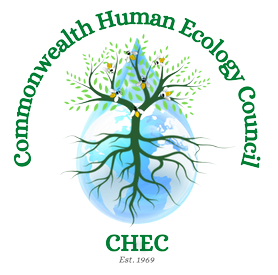Can we Eat Fish and Fight Climate Change?
This post has been updated as of 20/05/2021.
Many of us know about the numerous studies claiming how red meat is having a large impact on our ecological footprint – but how about fish? Can we eat fish while fighting climate change?
The Problem of Eating Fish
There are a few ecological problems of eating fish. We will focus on two: ocean biodiversity decline and commercial fishing waste.
Ocean Biodiversity Decline
Fishing is considered as one of the most significant drivers of declines in ocean wildlife populations. One of the main reasons behind this is commercial overfishing due to our consumption habits. We eat a lot of fish.
Overfishing - catching fish faster than stocks can replenish - is an urgent matter and a serious threat to our oceans. According to a UN global assessment report, the number of overfished stocks has tripled globally in half a century. Today, a third of all monitored global fish stocks are being over-exploited and over 60% are fished to the maximum sustainable yield. On top of that, we have illegal and unregulated fishing.
The consequences of overfishing are alarming. Overfishing can have an impact on the entire marine ecosystem. According to the WWF, overfishing can result in an imbalance that can erode the food web and lead to a loss of other important marine life, such as corals. As if that is not bad enough, the damage done by overfishing also affects all those people around the world who rely on the sea for food or income.
Commercial Fishing Waste
Waste is a global problem. It is everywhere. The fishing industry is no different.
More than 640,000 tonnes of fishing waste is dumped into the oceans each year. The news media may focus on the Great Pacific Garbage Patch but it is nothing compared to the damage caused by commercial fishing waste.
Nets, lines, pots and traps are all regularly discarded and left in the ocean. This type of waste has been accumulating for years. And it happens on a mass scale.
This pollution is bad for fish and over marine species. It's bad for the oceans.
Waste is never good (learn how to limit your food waste here!) and commercial fishing waste is one of the worst types.
What Solutions are there to Commercial Overfishing?
I think you have all got my point. Overfishing is bad. What are the solutions then?
To protect and restore the oceans from overfishing, we do not only have to catch less fish, we also need to change the current fishing practices to minimize the damaging consequences, such as bycatch.
‘Bycatch’ refers to the non-target sea creatures who are caught unintentionally in fishing gear, such as dolphins, whales and turtles. Bycatch causes the needless loss of billions of fish and it is only possible to stop by changing the way fishing is practised.
However, as explained in Netflix's Seaspiracy documentary, the monitoring of fishing practices is difficult. And deadly.
What Can I do in the Battle to Stop Overfishing?
Does this mean we should all be vegetarians? What are the options for those of us who still want to keep having a diet that includes fish?
Change Your Fish Eating Consumption Patterns
Everything starts with a choice. It's no different here.
You may not want to cut fish out of your diet completely. It's one option though.
Another is to simply consume less. Take part in fish-free weekends, weeks or months. Every little will help.
Finally, if you are going to eat fish, eat local. Choose locally caught fish. Besides knowing exactly where your fish comes from, small-scale fishermen more frequently use lower-impact catch methods like hook and line, or laying pots and traps.
Look for Good Practice Logos
Look for the MSC or ASC logos when buying fish or other seafood products. These logos mean that the fish or seafood were likely sourced with minimal environmental damage.
However, choosing fish with a ‘sustainable’ logo doesn’t necessarily reassure us about the fish we buy. According to a recently published article in the Guardian, scandals suggest that even the Marine Stewardship Council, MSC, label is no guarantee of sound practice.
Use a Fish and Seafood Guide
Fish and seafood guides can be helpful. They enable us to to learn which fish is okay to eat and which species are overfished or a danger to the marine ecosystem in other ways. There are plenty of guides that are easy to access on your phone.
Some organisations have also made guides to print out and carry with you. Since the recommendations might vary depending on where you live, there are several guides customised for specific areas or countries. Suggestions of fish and seafood guides to use:
Seafood guides by WWF. WWF has more than 20 fish guides that are adapted to specific countries in the world, e.g. Malaysia, Singapore and South Africa.Monterey Bay Aquarium's Seafood Watch guide. They also flag what types of seafood that pose a health risk to consumers. The guide is available as an iphone app and to print out.
Good Fish Guide by MSC, UK. The guide ranks the fish after the method of production, the capture method, capture area, stock area and stock detail. The guide is also available as an app and a pdf-file.
Australia's Sustainable Seafood guide.
Canned tuna guide, Australia.
If you enjoyed this article on eating fish and climate change and would like to see future posts relating to it please consider supporting CHEC by becoming a member or donating today!
